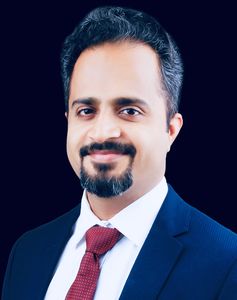Interview/ Prof Hardik J. Pandya, IISc Bengaluru & Dr Shabari Girishan K.V., Ramaiah Memorial hospital, Bengaluru
ON JANUARY 30, tech billionaire Elon Musk claimed that his company Neuralink successfully implanted one of its wireless chips inside a human brain. In a post on X, Musk said “promising” brain activity had been detected after the procedure and the patient was “recovering well”. The procedure is expected to help attain the goal of “connecting human brains to computers to help tackle complex neurological conditions”. In an interview with THE WEEK, Dr Hardik J. Pandya of the department of electronic systems engineering at the Indian Institute of Science (IISc), Bengaluru, and Dr Shabari Girishan K.V., consultant neurosurgeon and associate professor at Ramaiah Memorial hospital, Bengaluru, explained the significance of Neuralink’s achievement in the area of neurosurgery and in the larger realm of mind mapping, brain fingerprinting and further technological advancements. The duo, part of a larger team leading cutting-edge research in brain co-processor chips in India, said it was indeed a milestone for neurological sciences.
Excerpts from the interview:
Q/ What is your take on the significance of Neuralink’s achievement?
Pandya: At IISc, we have been working on implantable devices that can be placed inside human bodies. Along with IIT Kanpur, we are also into indigenous fabrication of these kinds of devices. So, it is indeed very exciting that Neuralink has been able to achieve this feat of installing a chip inside the human brain. This is remarkable and revolutionary in problem areas relating to motor skills, vision and epilepsy because these implantable devices are really the only solution we have right now. However, the challenging part for us here is that we don’t know exactly which area they have implanted the chip into, how many electrodes are there and what the tech really looks like. As of now, all we know is that the patient in whom the chip has been placed is in the recovery stage. Unless we are able to generate data from the patient that spans a considerable period of time, we will not know the effectiveness of this technology. But such a device that can be used to help human beings overcome some of the deficits in the brain is really exciting.
Q/ Implantation in the human brain has been going on for a long time. What is new here?
Shabari Girishan: The procedure is not new; we have been performing DBS (deep brain stimulation) for years. What is novel is the size of the device and its functionality. The device is very flexible and small, which is very helpful for surgeons to implant in the brain. It is supposedly a hair-like sensor, going into the brain substance. The major advantage is that this device can be implanted directly in any part of the eloquent region in the brain (a very important area which controls motor and sensory functions). So once we implant, the data that can be gathered can be vast. It could be motor functional data or visual data or cognitive data. So the applications are going to be numerous.
Q/ What is particularly concerning regarding this chip?
Shabari Girishan: It is a very small device and you are trying to simplify the brain function too much because one function is not really part of just one single area. Considering the size of the device, they need to look at the implantation of multiple areas. I guess an important role of the device is to enable communication with the external appliances for patients who really cannot use them because of various neurological deficits. We are working to improve this technology further and make some indigenous electrodes in India itself that are affordable.
Q/ Before Neuralink, there have been other companies that made similar advancements. Is it good marketing that brought Neuralink into focus?
Pandya: A lot of companies such as Meta, Synchron and Kernel are coming up with medical applications like motor assistance, prosthetics, communication and wheelchairs. Or it can be non-medical applications like education, VR (virtual reality) gaming, physical amplification, memory augmentation, lie detection. The way Musk approaches the problem is what makes Neuralink different. It all depends on the team. There is a team of engineers, scientists and doctors to get the FDA (US Food and Drug Administration) approvals. The stronger the team, the easier it is to achieve success. Of course, Musk’s idea, his vision and his zeal to invest in such technological advances is something worth applauding. We require people like him and hopefully we will have many like him from India some day.
Q/ Are we working towards developing even more advanced technologies here in India so that we can have Neuralink come down to collaborate with us?
Pandya: Of course, that is the aim. There are companies in India, particularly when you talk about innovative technologies. But very few fabricate neural implants. We don’t develop devices, although we have the capability to do that, only because we don’t have the right set of collaborators to work with. Now with funding available from Pratiksha Trust, a charitable trust founded by Kris Gopalakrishnan (co-founder, Infosys Technologies) and Sudha Gopalakrishnan, we, at the IISc, are working on a Brain Computational Data Sciences Moonshot Project. We are developing not only non-invasive technologies, but also invasive technologies to address a challenging problem in the area of neural engineering. And in five to ten years, a lot of things will be made indigenously.
All these technologies that are currently available are not affordable. So what we require is not only philanthropist investment, but also bigger funding on neural engineering technology development from the government, so that many institutes can come together and work on larger projects.




